Art & Exhibitions
Feast Your Eyes on Photos of the Venice Biennale’s Much-Anticipated ‘Viva Arte Viva’ Exhibition
Christine Macel has divided her show into nine "pavilions." Here's what they look like.
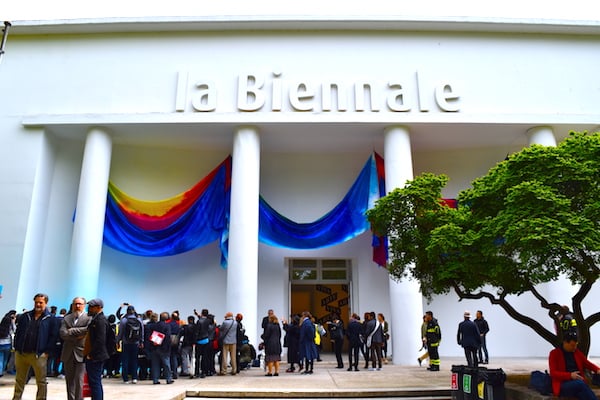
Christine Macel has divided her show into nine "pavilions." Here's what they look like.

Ben Davis

At the heart of the 2017 Venice Biennale is curator Christine Macel’s “Viva Arte Viva” show. As usual for these types of international events, it’s a sprawling affair, with some 120 artists. My colleague Andrew Goldstein already posted some of his finds from the show. As I gather my thoughts for a review, here are some images from the event to give a sense of how it feels.
Not content with the normal split of the big show between the Central Pavilion in the Giardini and the sweeping Arsenale space, Macel has further segmented her Biennale show into nine themed sections, or “Pavilions,” as she calls them. The “Pavilion of Artists and Books” and the “Pavilion of Joys and Fears” split the Central Pavilion, while the rest are dolloped out across the Arsenale—except for the final “Pavilion of Time and Infinity,” which spills from the Arsenale into some buildings in the garden beyond, sharing space with some of the Biennale’s Special Projects.
Below, I’ve picked out five works from each of these sections.
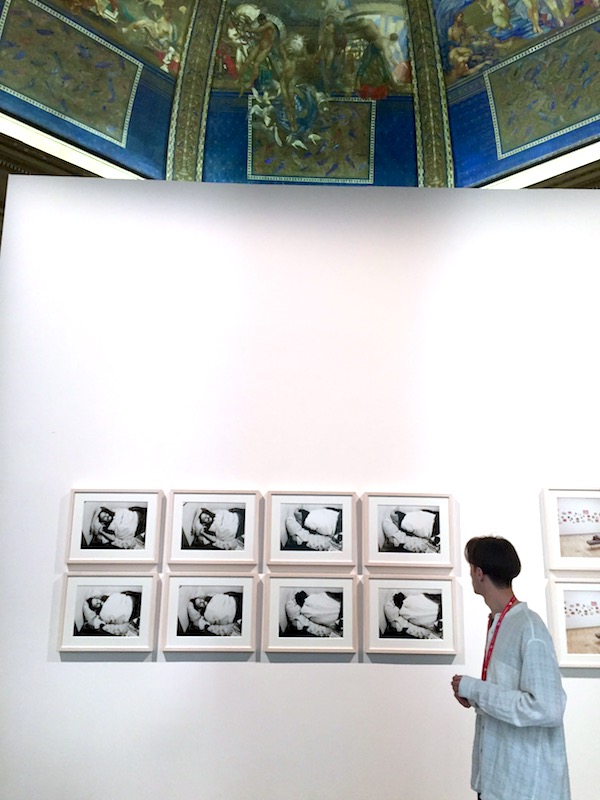
The opening statement in the Central Pavilion: Mladen Stilinović’s “Artist at Work” series, images of the Croatian conceptual artist asleep.
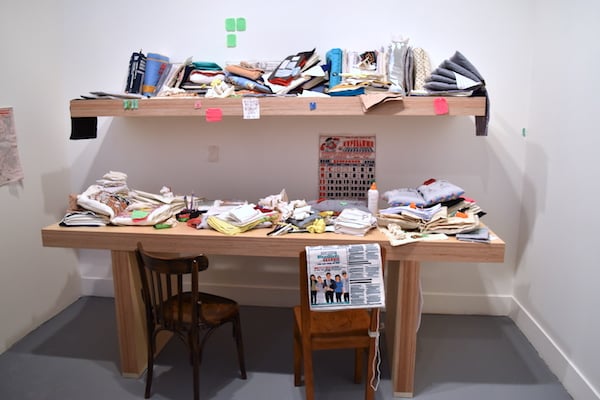
Katherine Nuñez & Issay Rodriguez’s In Between the Lines 2.0 (2015-17), soft scultptural recreations of school supplies.
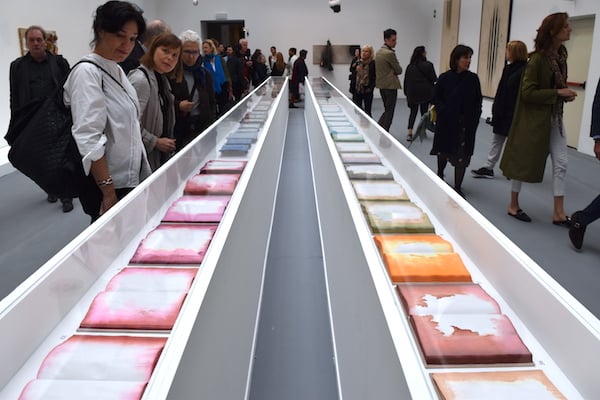
Geng Jianyi’s series of ink-soaked books.
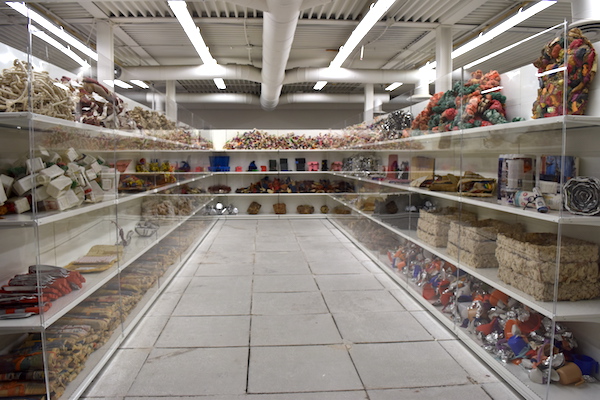
Hasan Sharif’s Hasan Sharif’s Studio (Supermarket) (1990-2016), featuring 30 years of his work presented on supermarket-style shelves.
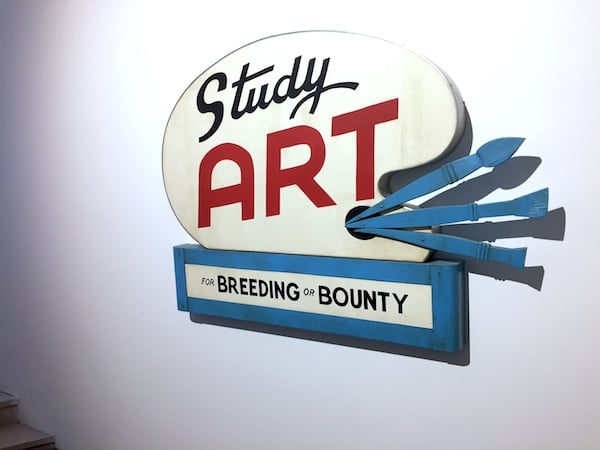
John Waters has a series of signs (Study Art Sign) around the Pavilion, each of them riffing on a vintage ad sign from the Baltimore School of Fine Arts, but changing the slogan.
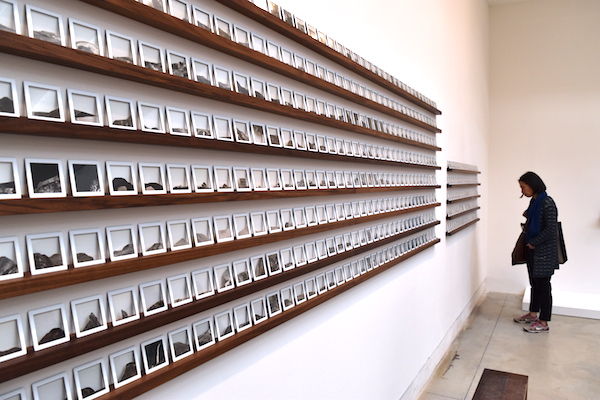
Hajra Waheed’s “A Short Film,” a slide series constructed from collaged vintage photos, mounted on shelves.
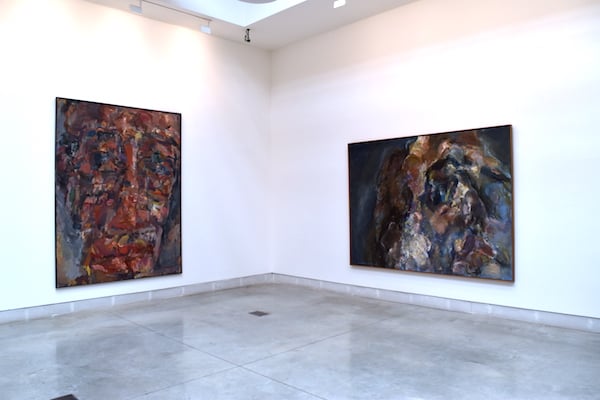
Untitled paintings by Marwan.
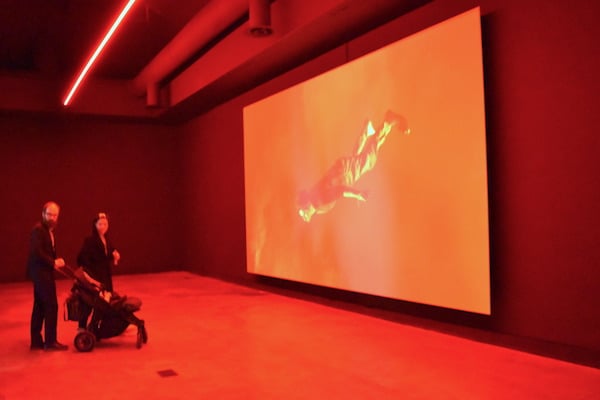
Sebastián Díaz Morales’s Suspension (2014), a slow-motion film of a man falling through space.
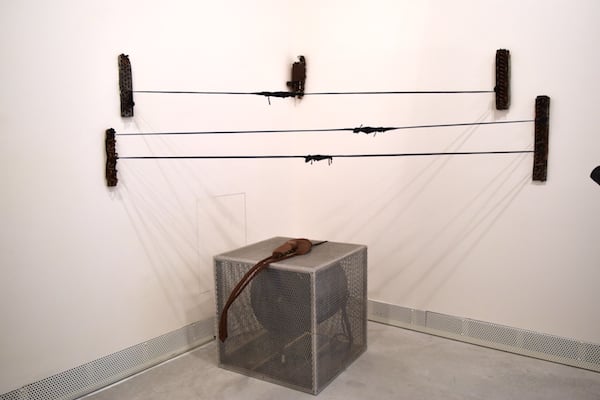
Senga Nengudi’s new work, A.C.Q. (2016-17), featuring her signature stretched nylons, only this time subtly vibrated by the machine to which it is attached.
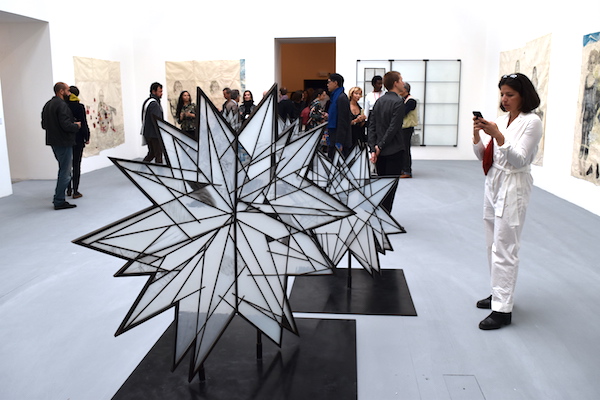
Kiki Smith’s Rogue Stars (2012).
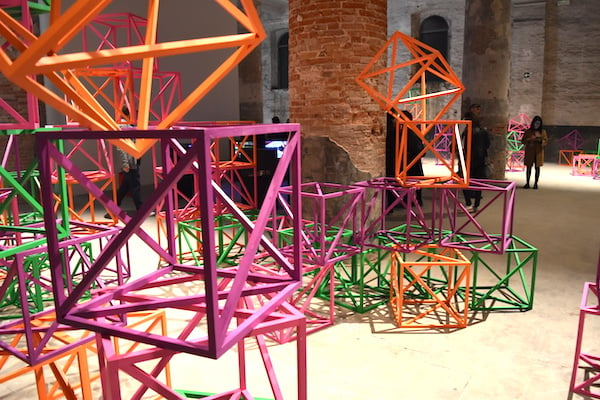
Rasheed Araeen’s Zero to Infinity in Venice (2016-2017), colored cubes that are meant to be interacted with.

Maria Lai’s Bread Encyclopedia (2008), books bound in bread.
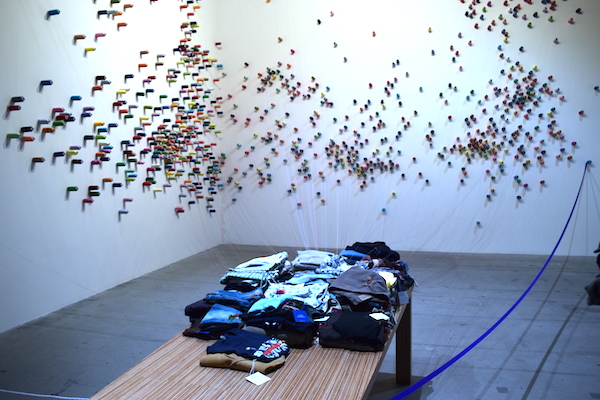
Lee Mingwei’s The Mending Project (2009-2017), a participatory piece that asks visitors to bring clothing to the Biennale to be mended, and then to become part of the show.
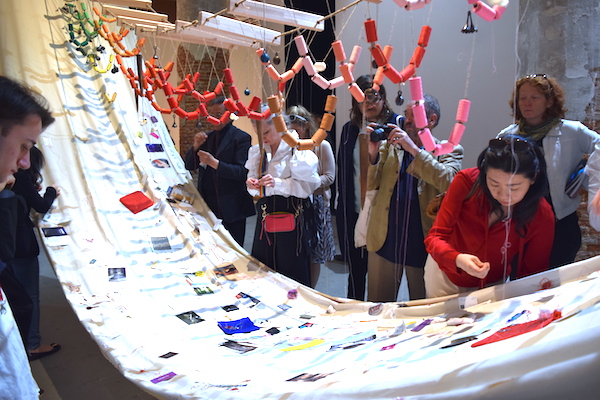
David Medalla’s A Stitch in Time (1968/2017), a participatory project that asks uses to contribute to an embroidered tapestry.

Yorgos Sapountzis’s Sculptures Cannot Eat (2017), composed of, among other things, unique printed fabric and food sealed in plaster jars.
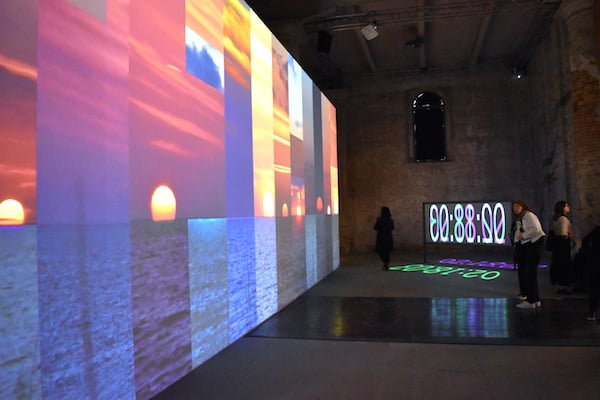
Charles Atlas’s The Tyranny of Consciousness (2017), which includes a montage of sunsets, audio of a lecture on politics by drag queen Lady Bunny, and Chai, a video countdown clock that ticks off the time taken by the setting of the sun.
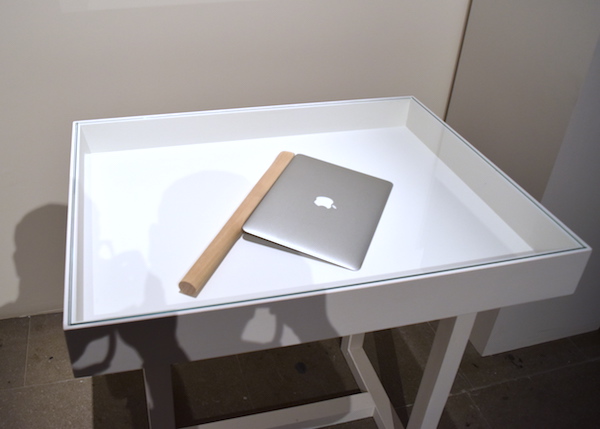
Shimabuko’s Sharpening a MacBook Air (2015), a sharpened MacBook Air mounted as an axe.

Julian Charrière’s Future Fossil Spaces (2017), a sculpture made from salt from Salar de Uyuni and lithium brine enclosed in acrylic containers.
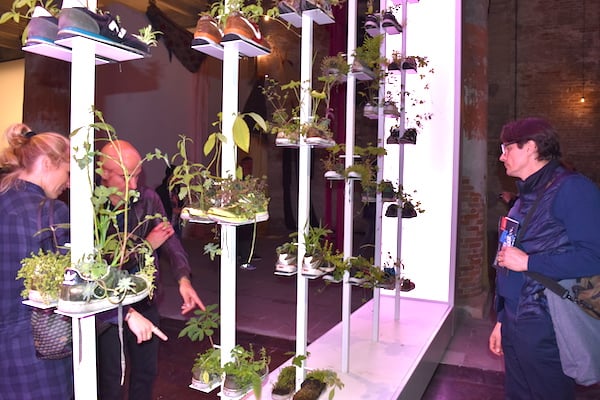
Michel Blazy’s Collection de Chaussures (2016-17), featuring plants growing out of sports shoes.
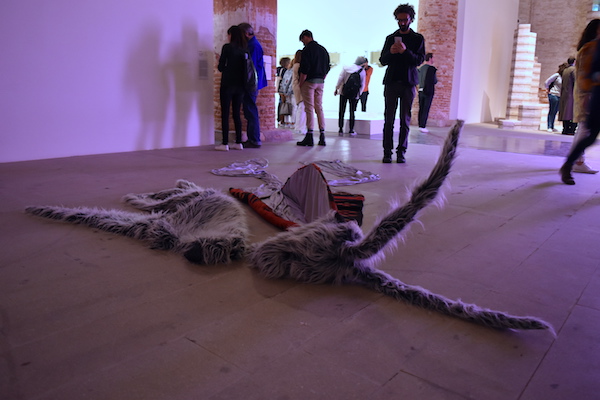
Petrit Halilaj’s Do you realize there is a rainbow even if it’s night? (2017), a sculpture of a giant moth.

Achraf Touloub’s “Untitled” works (2016-17), made of nylon and canvas, with metal chains, accompanied by studies in ink on paper.
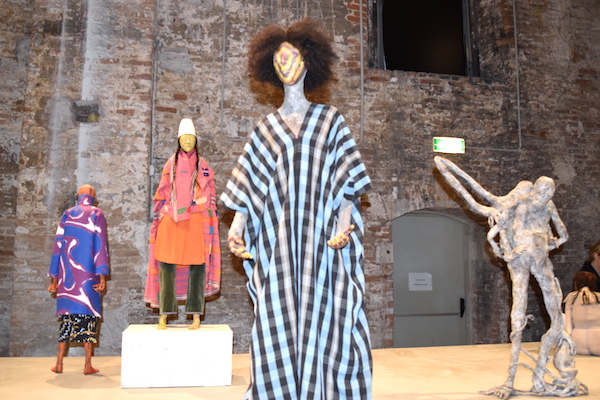
Sculptures by Francis Upritchard.
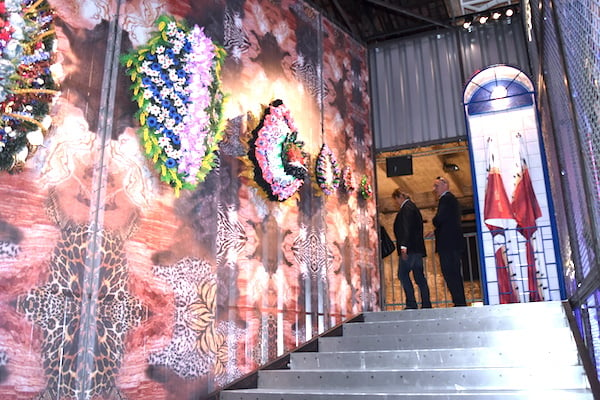
View inside Irina Korina’s environment Good Intentions (2017), which incorporates flower arrangements, flags, and flashing LED lighting.

Gabriel Orozco’s Visible Labor (2015), featuring wooden beams made using traditional Japanese craft.
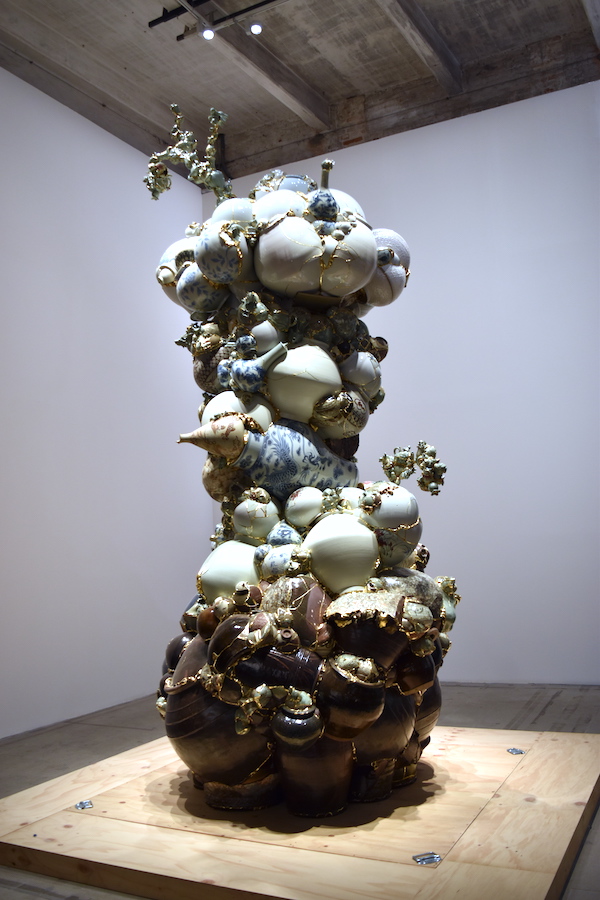
Yee Sookyung’s Translated Vase_Nine Dragons In Wonderland (2017), made of industrial pottery fragments found around Seoul.
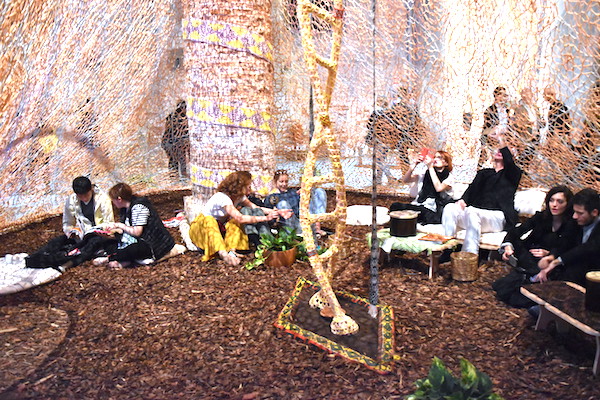
Ernesto Neto’s Um Sagrado Lugar (A Sacred Place) (2017), modeled after the ceremonial pavilion of the ayahuasca ceremony in the Huni Kuin Indian culture.
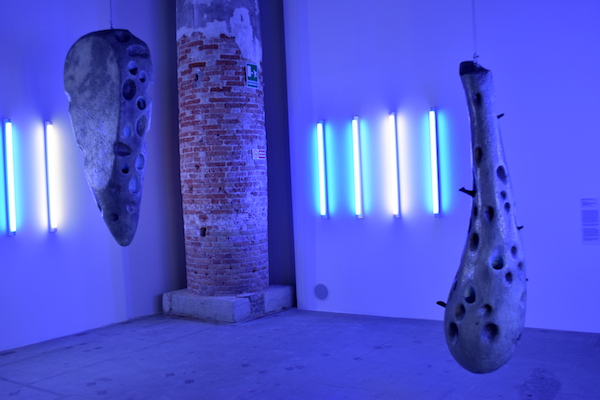
Naufus Ramírez-Figueroa’s Third Lung (2017), an “interactive healing installation.”
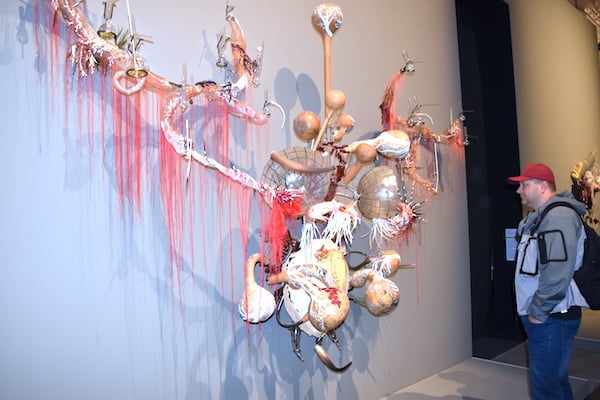
Rina Banerjee’s sculpture When signs of origins fade, fall out, if washed away, trickle into separations, precipitate when boiled or filtered to reveal all doubleness as wickedness. Vanishing act that migration, mixation like mothers who hid paternity who could name move me slowly reveal only me slowly reveal me only when my maker stands straight (2017).
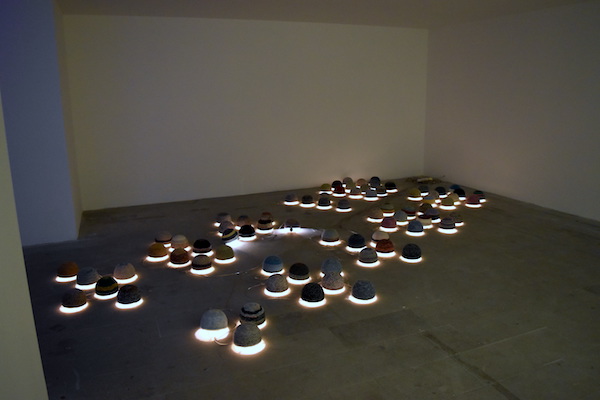
Younès Rahmoun, Taqiya-Nor (2016), featuring 77 Moroccan hats.
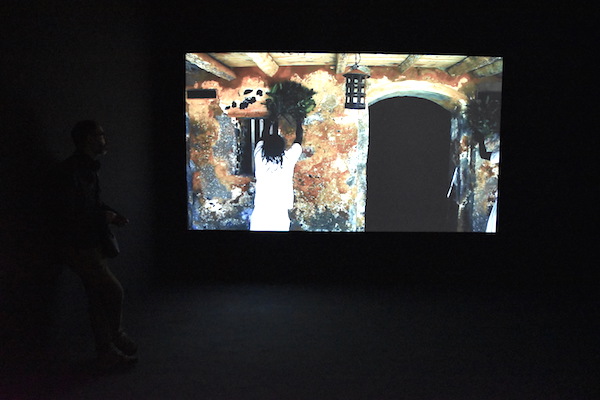
Ayrson Heráclito’s O Sacudimento da Casa de Torre (2015), showing an Afro-Brazilian “shaking” ritual, meant to divert the spirits of ancestors.
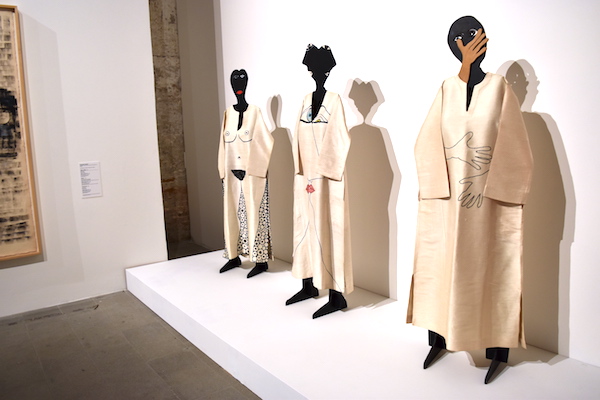
Hugette Caland’s Mannequin 3-5 (all 1985).
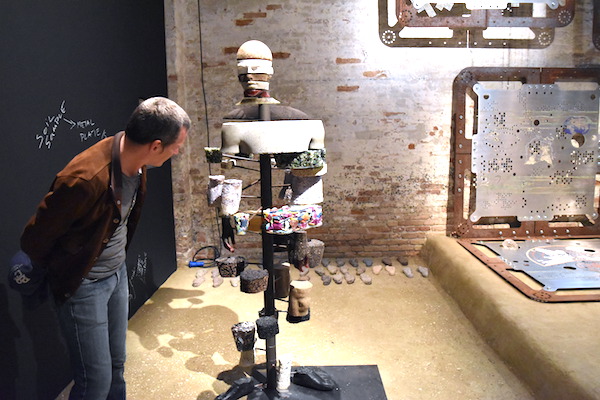
Installation view of works by Mariechen Danz.
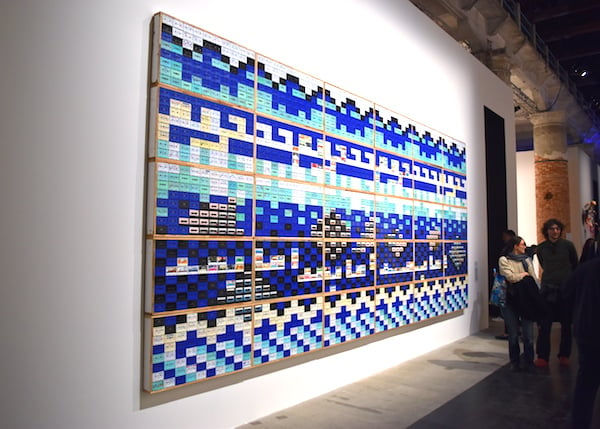
Maha Mallah’s Food for Thought ‘Amma Baad’ (2016), a mural composed of audio cassettes.
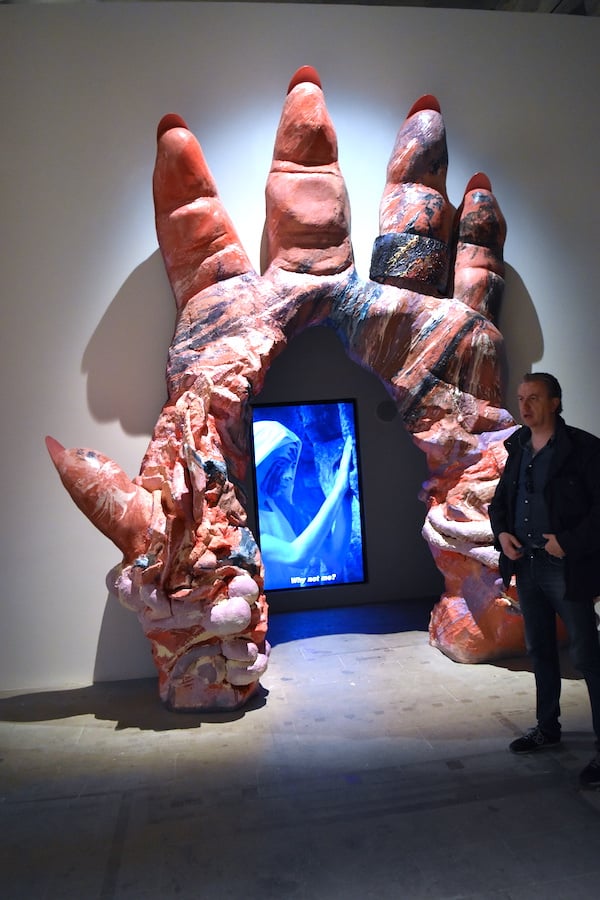
Entryway to Pauline Curnier Jardin’s installation Grotta Profunda, Approfundita (2011-17), a giant hand with “bestial features.”

Works from Jeremy Shaw’s “Towards Universal Pattern Recognition” series (2016), featuring archival photos of people in states of religious ecstasy in prism-like acrylic casings.
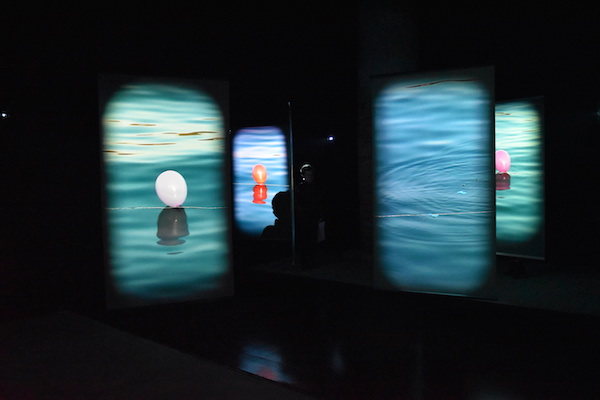
Installation view of Hale Tenger’s multi-channel video, Balloons of the Sea (2011).
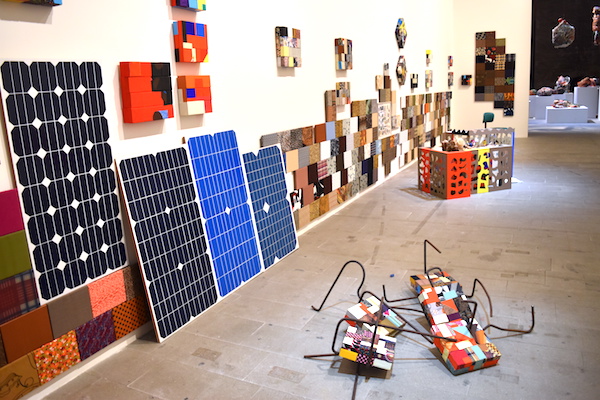
Nancy Shaver’s Standardization, Variation and the Idiosyncratic (2017).
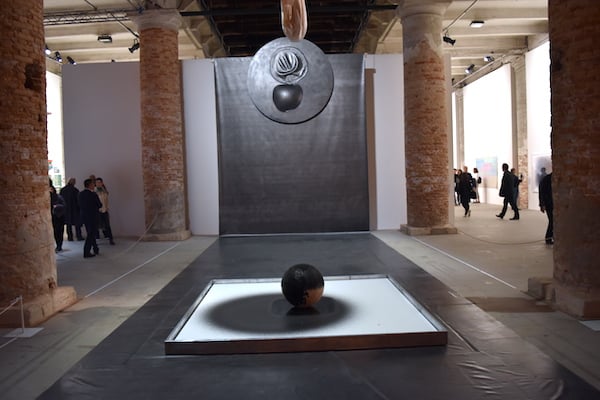
Takesada Matsutani’s Venice Stream (2016-17), featuring a bag, hung from the ceiling, that slowly drips Sumi ink, saturating the white fabric below.
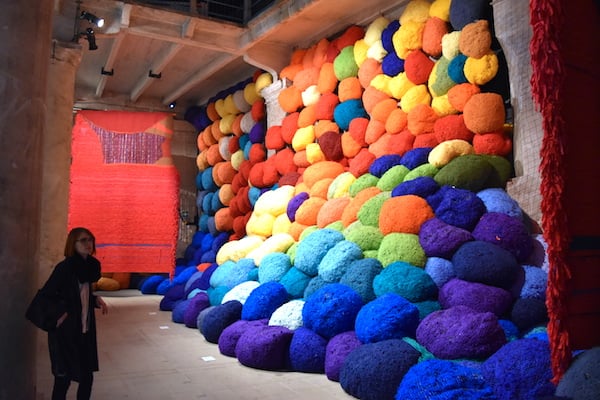
Shiela Hicks’s Escalade Beyond Chromatic Lands (2016-17).

Peter Miller’s Stained Glass (2015), an abstract projection.
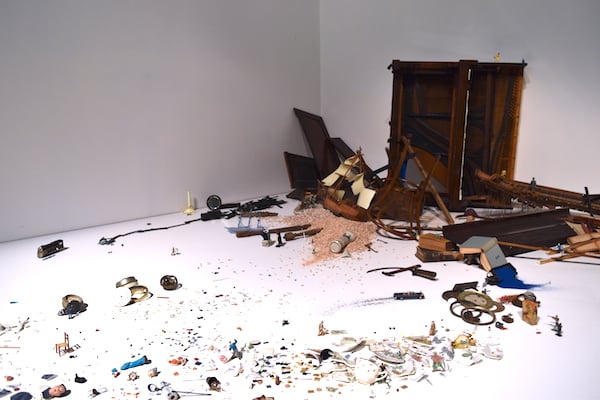
Liliana Porter’s El Hombre con el hacha y otras situaciones breves, Venecia 2017 (Man With Axe, Venice 2017) (2017).
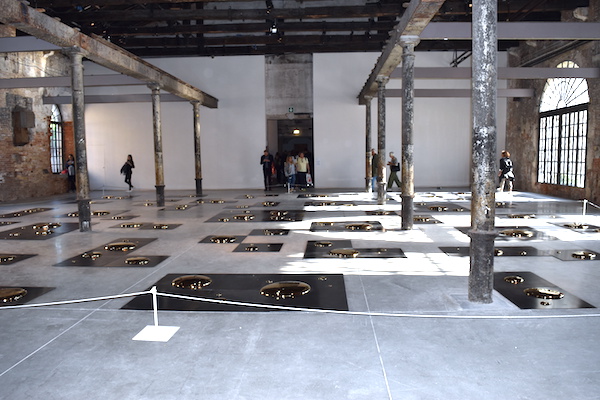
Liu Jianhua’s Square (2014), consisting of large gold ceramic drops on metal plates.
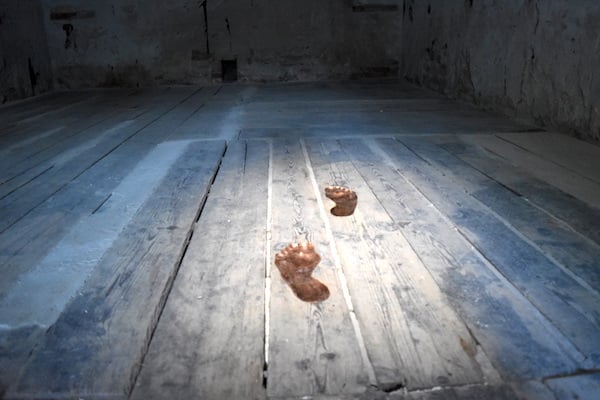
Fiete Stolte’s Printing My Steps (2014).
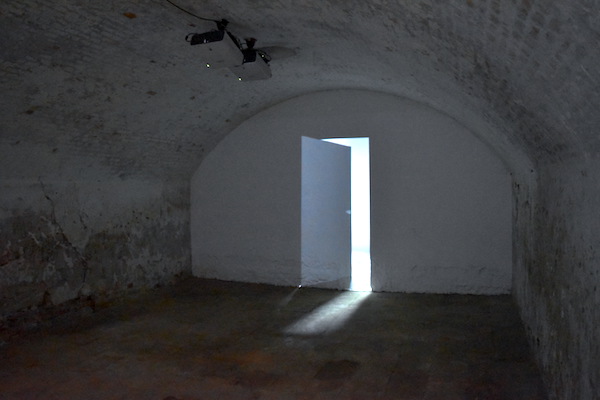
Vadim Fiškin’s Doorway (2015), a projection of a door continuously opening and closing.
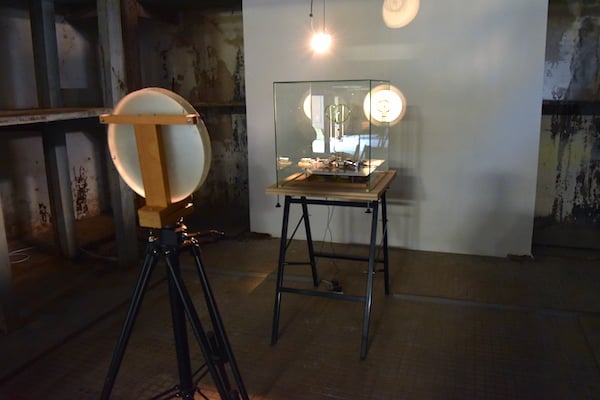
Attila Csörgő’s Clock Work, a shadow clock.
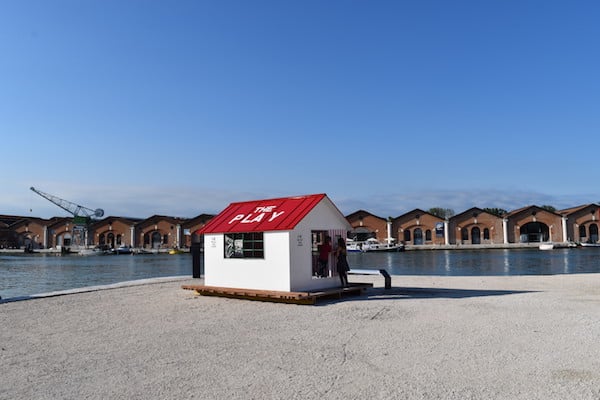
The Play, IE: The Play Have a House (2017), a tribute to a 1972 performance in which the Japanese art group sailed and lived for five days in a floating house.
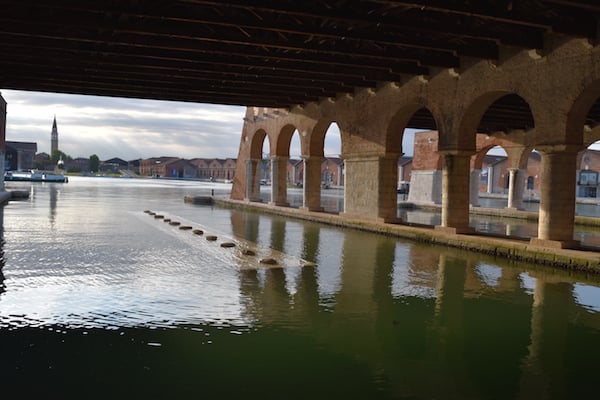
Kishio Suga’s Law of Situation (1971/2017), featuring 10 flat stones atop a submerged walkway.
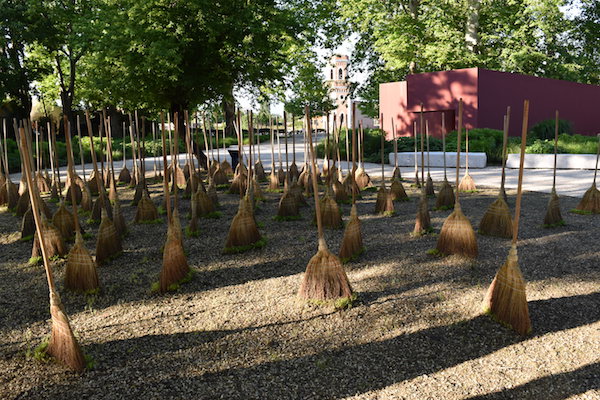
Michel Blazy’s Broom Forrest (2013/2017), featuring brooms with seeds implanted in their handles, which will grow into trees.
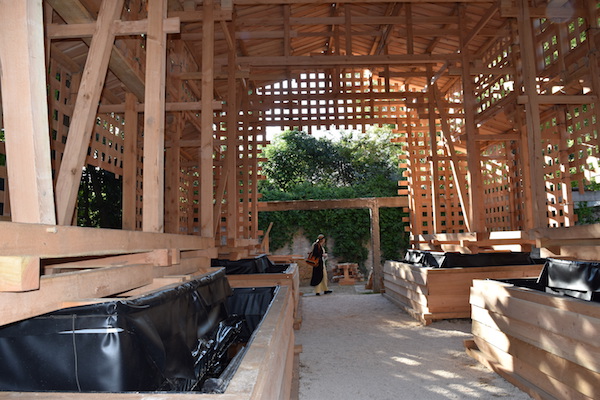
Michael Beutler’s Shipyard (2017), a simulation of a worksite.
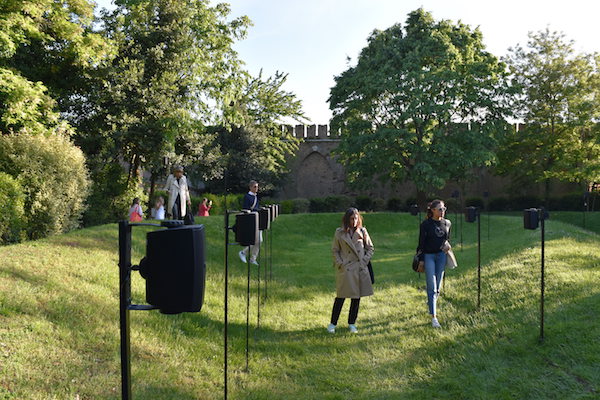
Hassan Khan’s Composition for a Public Park (2013/2017). a multi-channel sound installation dispersed around the Arsenale park.